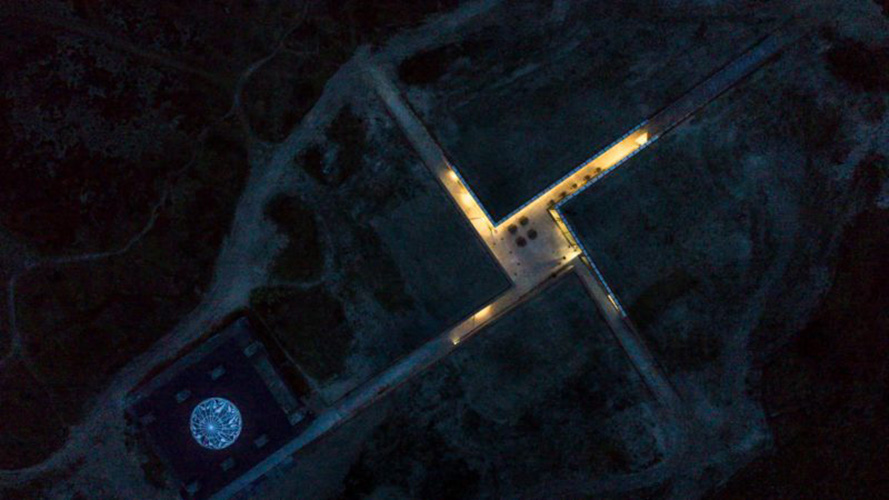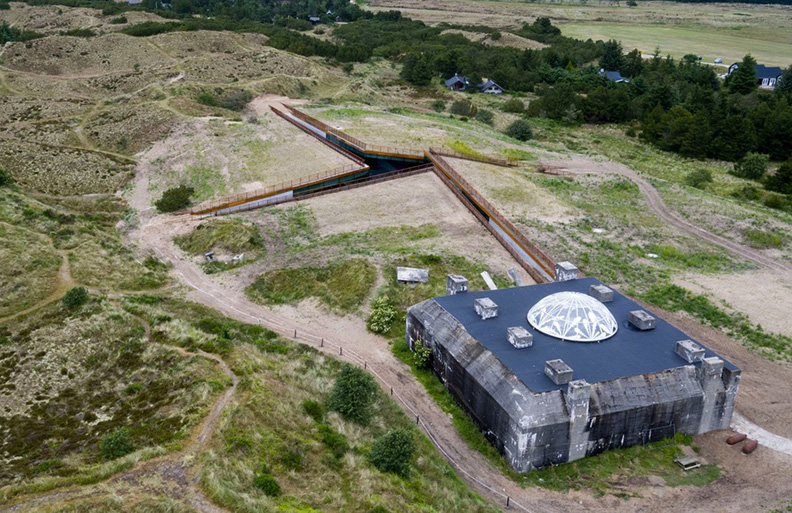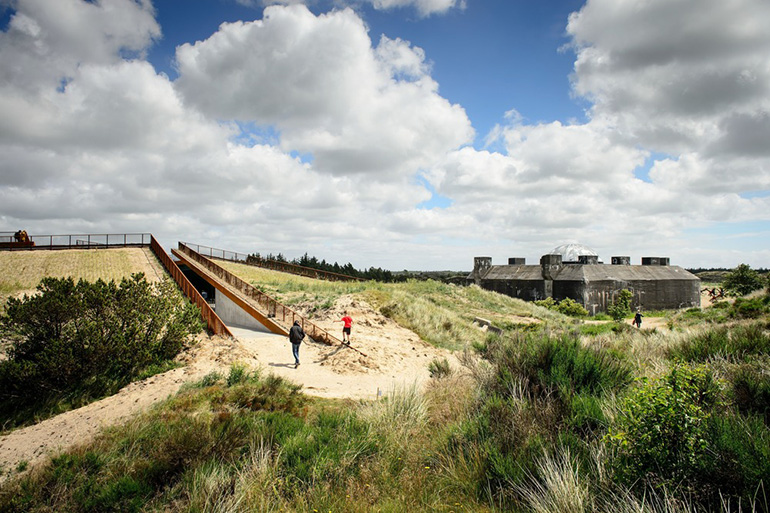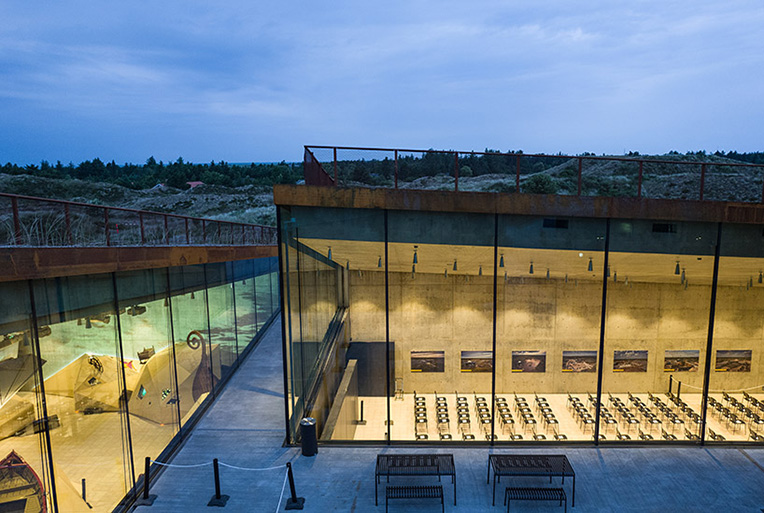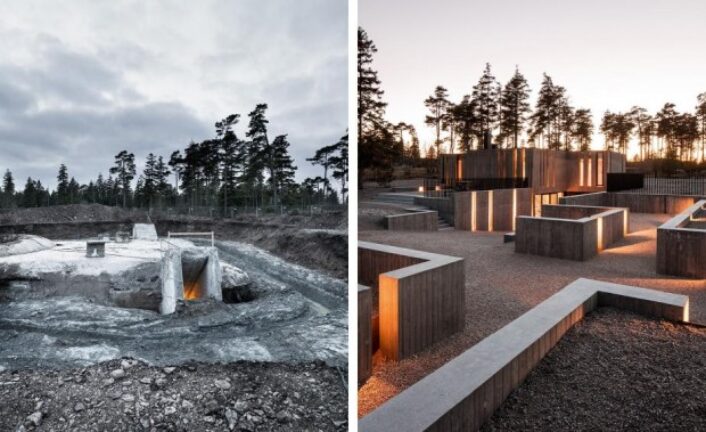For the past three years, an exciting renovation has been taking place in the coastal, relatively remote region of Blavand, Denmark. If you haven’t heard of Blavand, that’s because it isn’t a top tourist destination. Known for it’s empty beaches and wild, windy landscape, this area was ideal as part of Hitler’s Atlantic Wall defenses during WWII. Since 1944, this never-completed bunker sat as a dark reminder of a terrible time of history.
Never finished due to the end of the war in 1945, this concrete structure was eventually turned into a small “war” museum. Today, the original structure still encompasses the museum; but the renovation’s intent was to offset the Tirpitz Bunker’s oppressive presence with natural light.
Bjarke Ingels Group (BIG), the prolific Danish architectural firm, designed four separate walkways. These walkways, all underground, are carved deep into the sand dunes to create 30,000 square feet of below ground gallery spaces. A courtyard can be found where the four passageways converge, which now serves as the heart of the museum.
Most interesting is the lighting… partially illuminated by natural light that beams down through the sliced passageways!
And above ground, the rural location is left completely untouched. Whereas the 73-year-old bunker is visible from afar, what’s underneath remains virtually “invisible”.
